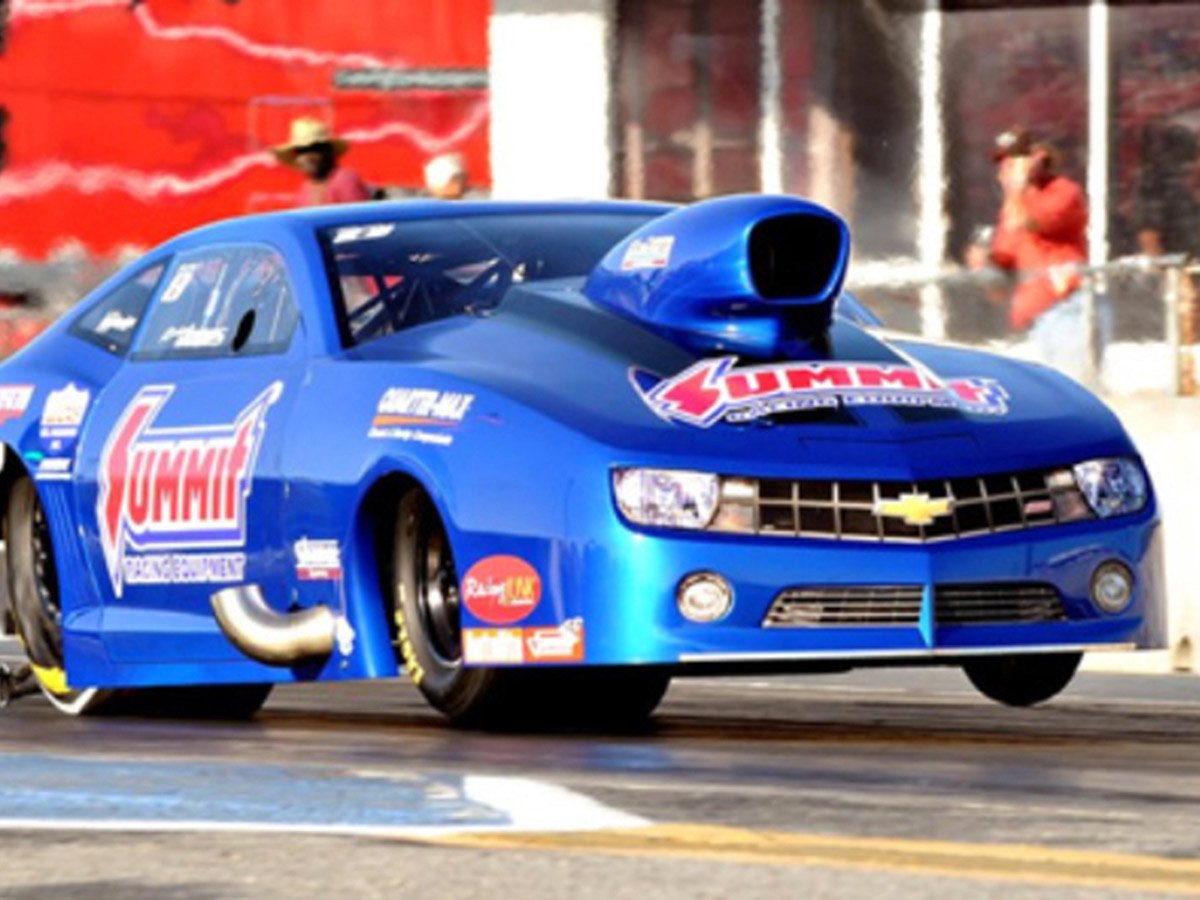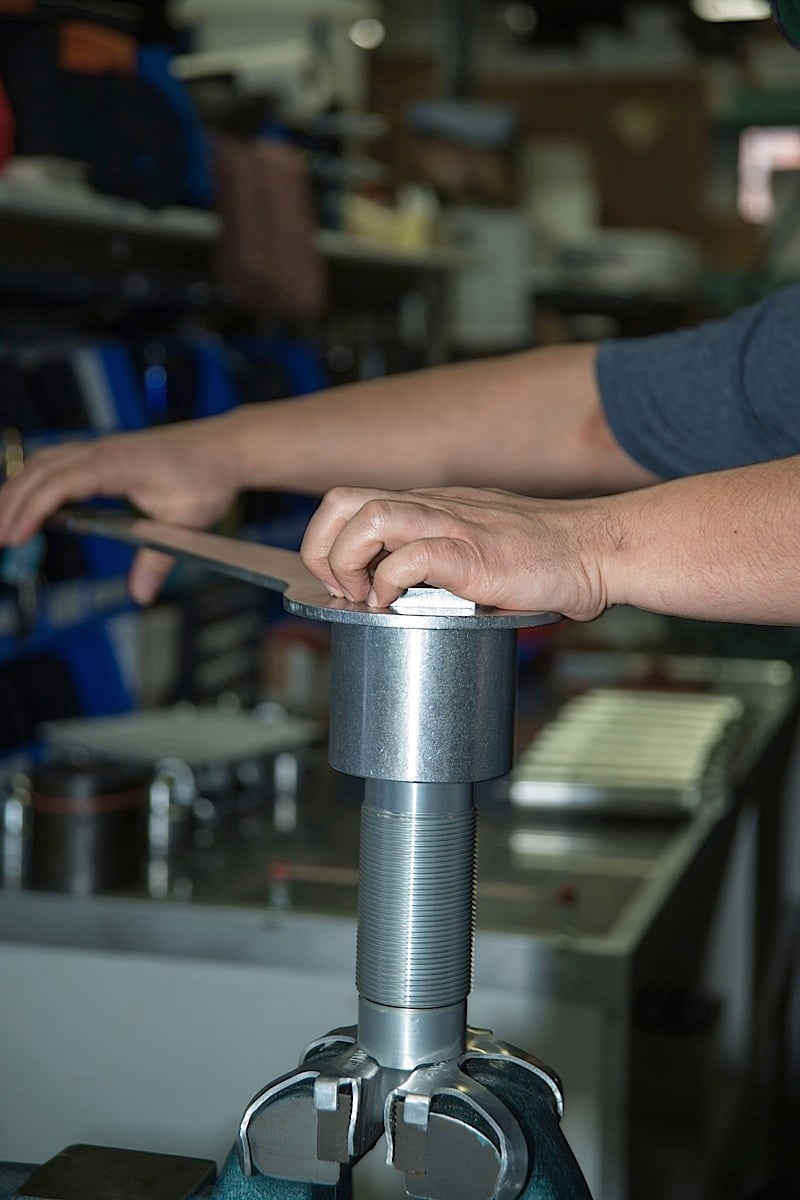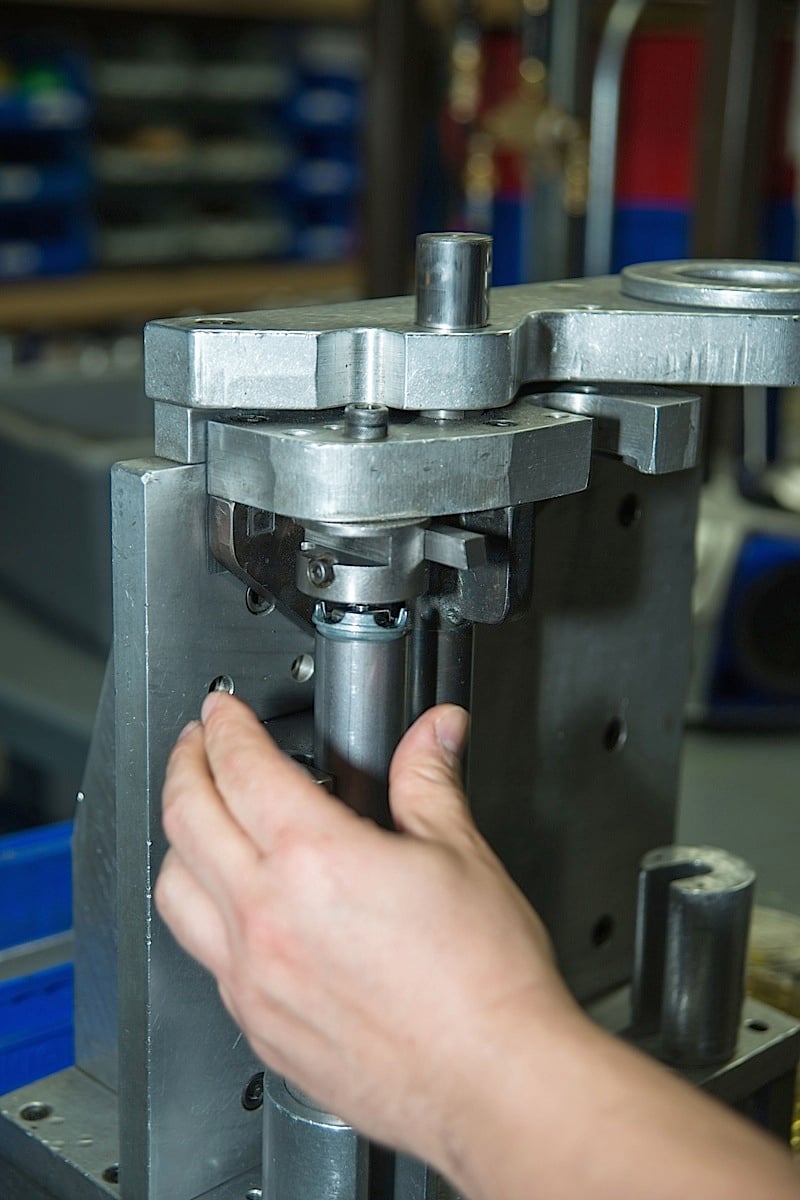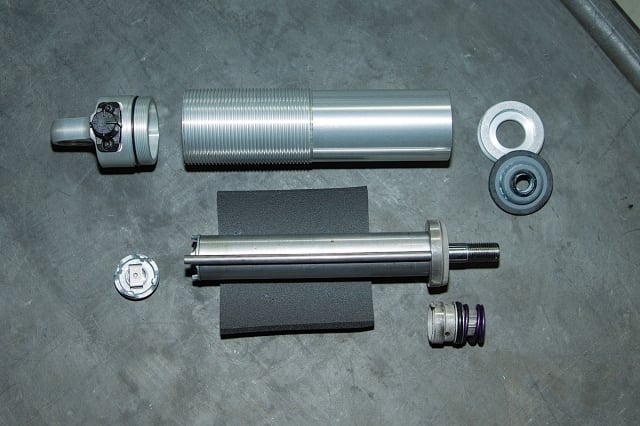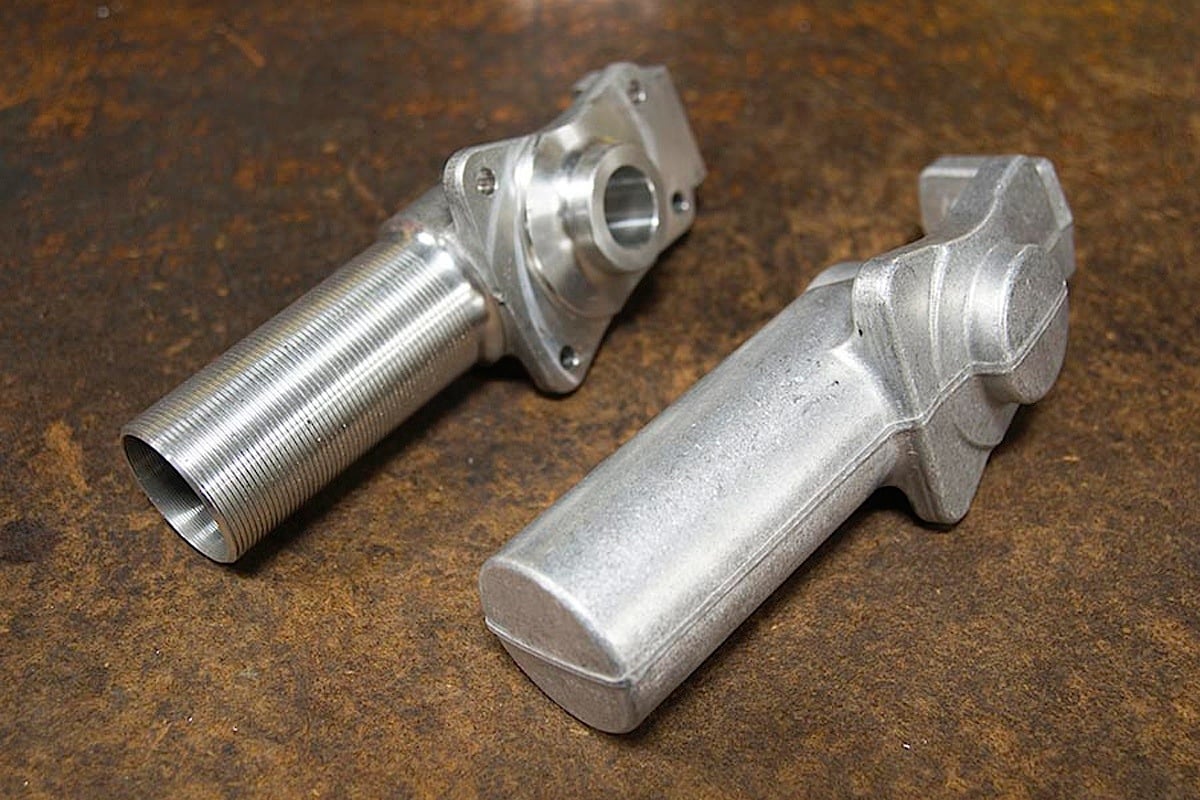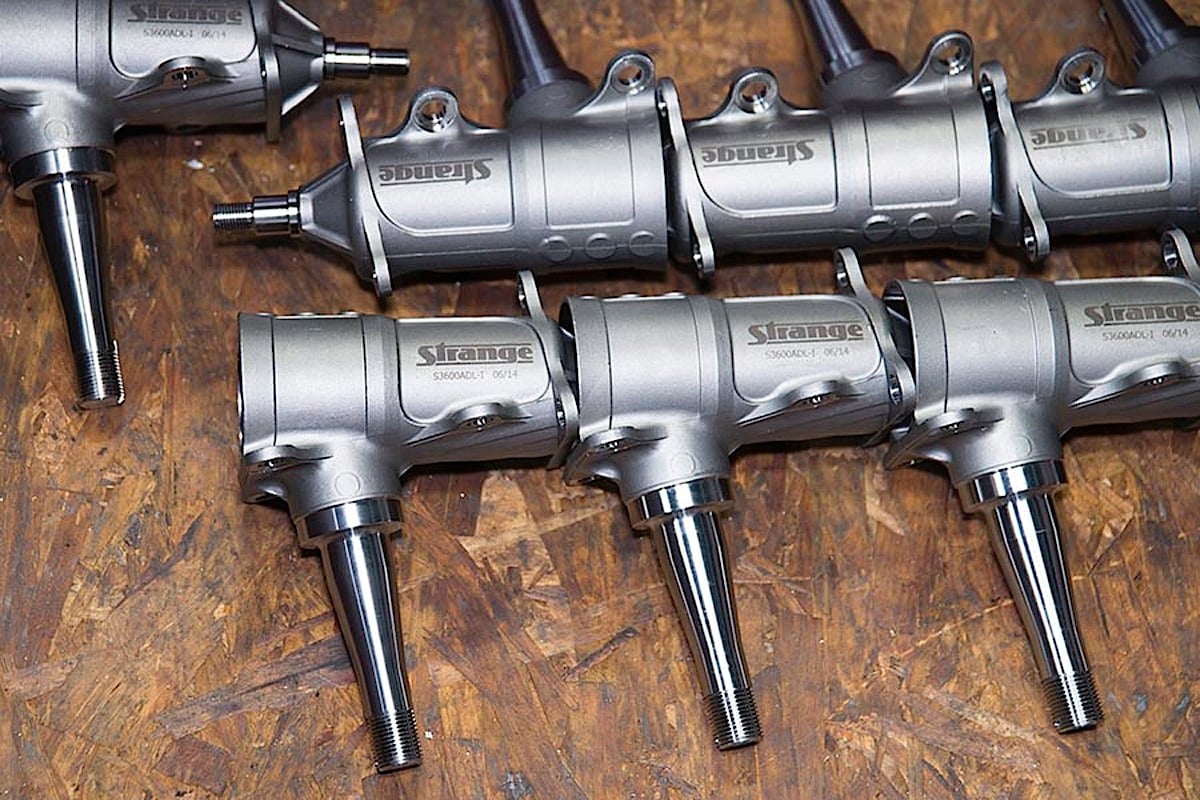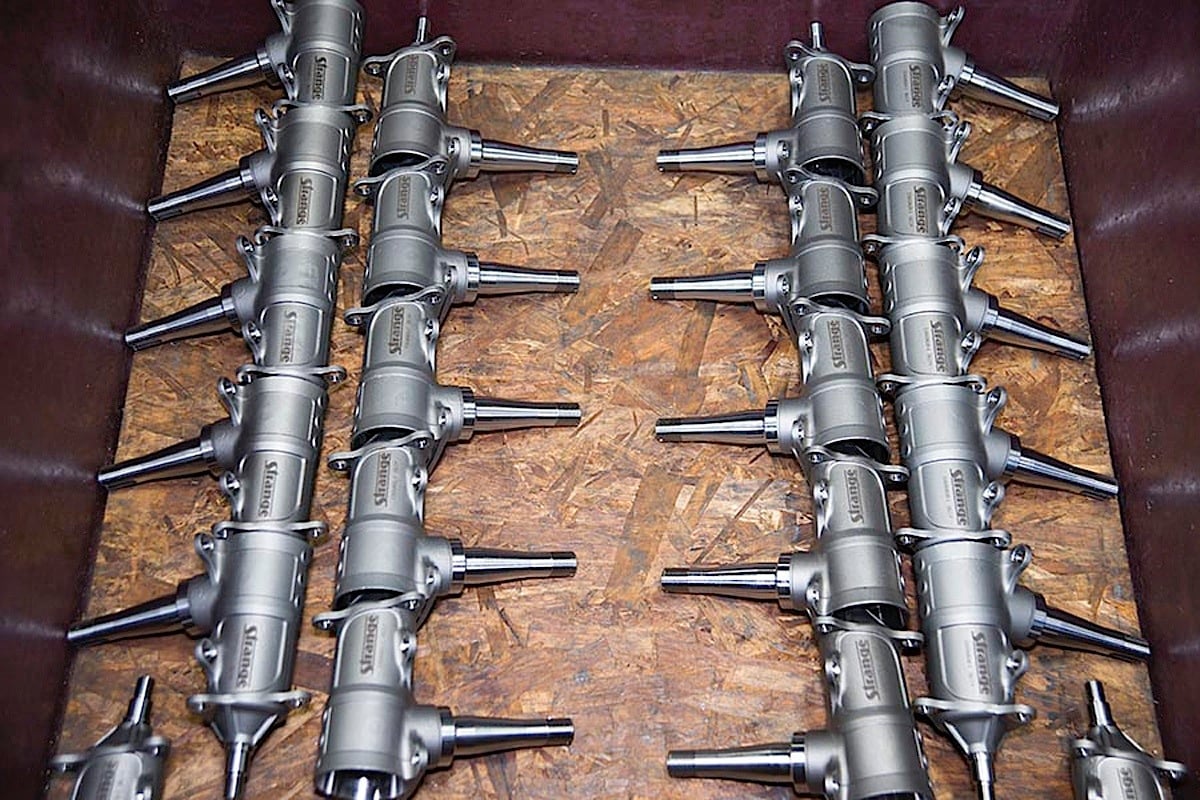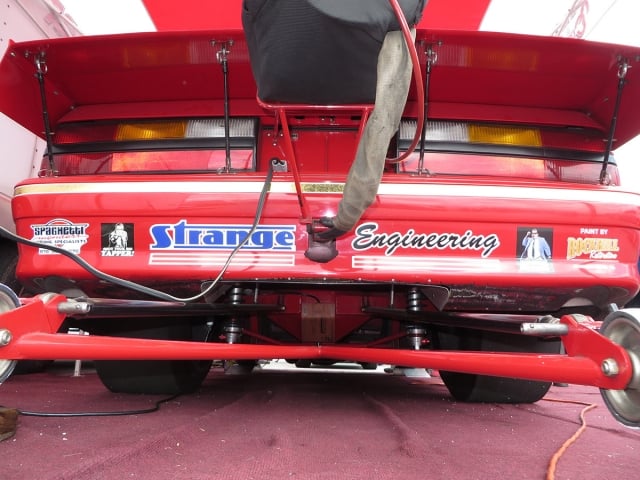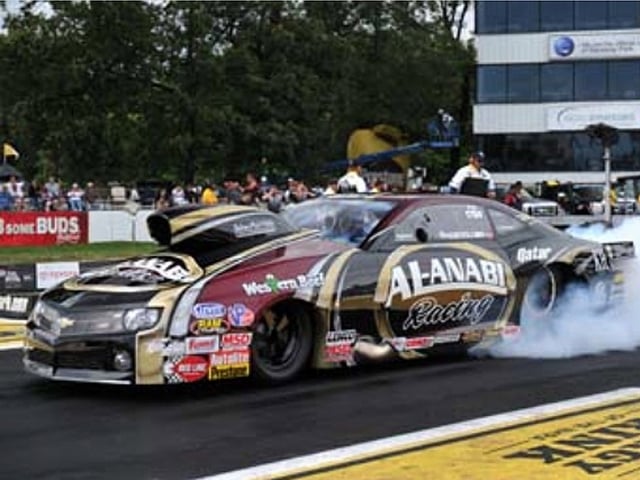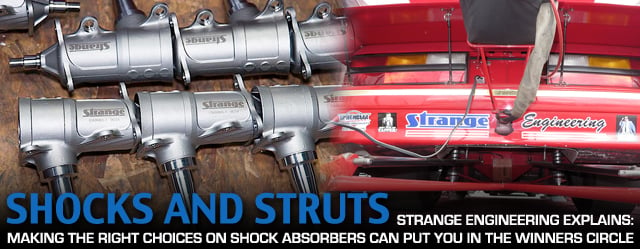 Looking for ways to improve your street or on-track performance? What’s one of the most cost effective ways to lower your ET, reduce lap times, or make your car handle better? It could be that suspension tuning is what you need, so we asked the suspension specialists at Morton Grove, Illinois-based Strange Engineering, and their president, Jeff Stange, for his advice.
Looking for ways to improve your street or on-track performance? What’s one of the most cost effective ways to lower your ET, reduce lap times, or make your car handle better? It could be that suspension tuning is what you need, so we asked the suspension specialists at Morton Grove, Illinois-based Strange Engineering, and their president, Jeff Stange, for his advice.
Celebrating their 50th anniversary, Strange Engineering has been manufacturing driveline and suspension components for all forms of racing and high performance vehicles since their inception in 1964. A drag racing and high performance leader, their heritage is in drag racing along with what they like to call a relentless need to innovate. With decades of manufacturing, design and engineering innovation, Strange continues to manufacture all their drag racing, street and track products here in the U.S.
We were fortunate to have a few moments with Jeff Stange, the second generation of the Stange family to run the company founded by his father Bob. Jeff sat down with us to answer the ways in which suspension upgrades can and do make a difference in any vehicle, at the track or on the road.
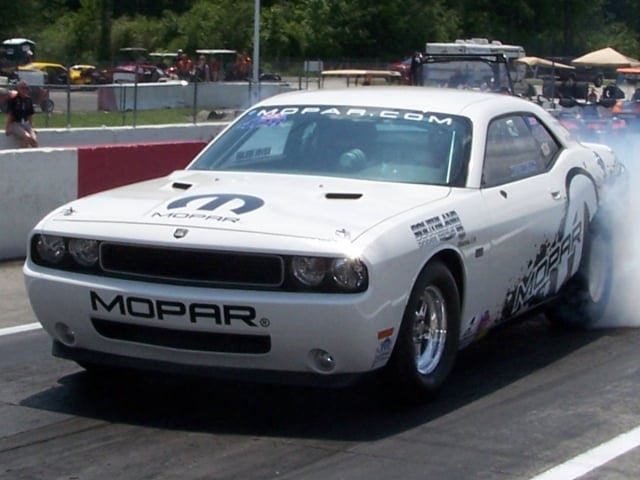
Strange also builds Chevy’s COPO Camaros & Mopar’s Drag Pak Challengers’ rear housings (Photo: Jason Sakurai).
Control is an important aspect of making your suspension work, whether we’re talking about a street car or drag race vehicle. Controlling the wheel motion allows you to master the vehicle’s dynamics. In the old days at the drag strip, this amounted to using old, worn out shocks that caused the nose of your car to rise quickly upon launch, transferring weight to the rear wheels and helping it to hook up.
Later, 90/10 drag racing shocks were invented, which did much the same thing, in that neither the worn out shocks nor the 90/10 drag shocks had much if any rebound. What they both had was plenty of bump resistance, which kept the car aimed skywards and contributed to making some cars a real handful to drive on the track.
Shock Absorbers 101
There are just two directions in which a shock absorber travels, one where it gets shorter and compresses, and the other where it gets longer and extends. ‘Bump’ is shortening or compression, and ‘rebound’ is lengthening or extension. Different aftermarket companies will refer to these dynamics using different terminology, but it all boils down to the same thing. Adjustable shocks, as in those manufactured by Strange Engineering, have made a quantum leap in advancing the technology, as we’ll see.
Due to their increased internal sophistication, double adjustable shocks are naturally more expensive than single adjustable shocks, and they are a worthwhile investment if you’re doing any type of racing. -Jeff Stange
Had we used either single or double adjustable shocks, like those that Strange makes, the adjustment range would have worked for the suspension movements that Mustang was experiencing. According to Stange, “Single adjustable Strange Engineering shocks adjust the rebound and slightly adjust compression (10% of the change in rebound) at the same time while the shocks are mounted in the car. Double adjustable shocks allow independent adjustment of both compression and rebound with separate knobs and can also be adjusted on the car. Due to their increased internal sophistication, double adjustable shocks are naturally more expensive than single adjustable shocks, and they are a worthwhile investment if you’re doing any type of racing.”
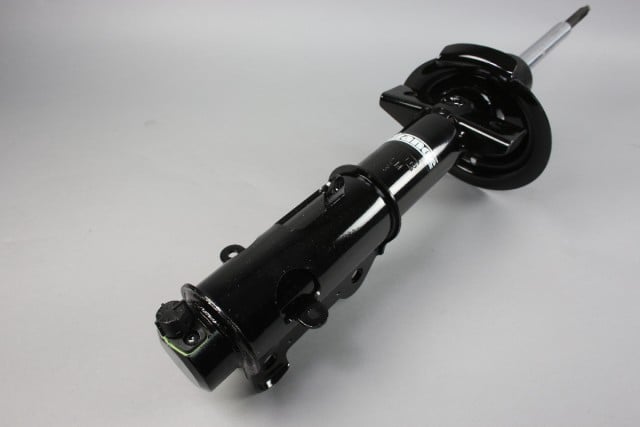
For ’05-’10 Mustangs, the S6009LM is a single adjustable front strut, with 10 settings, accessible rebound adjustment and steel construction. It fits OEM applications & accepts most coil-overs.
As hydraulic devices that dampen the chassis movement, shocks use oil flow through a set of orifices, valves, and discs to offer variable force resistance based on the speed (or velocity) of the shock movement. The fluid movement resistance is varied through the external adjustments, either letting the internal shock fluid flow faster or slower, and this changes the dampening force.
With Strange’s double adjustable shock, compression is adjusted by turning the compression knob from 1 to 12, one being the softest setting, and 12 being the stiffest. Stange pointed out that unlike the old adjustable shocks referenced earlier, with these tailored shocks only a single turn is needed before you’ll begin to experience a difference you can feel, as their rebound adjuster is quite sensitive to change. In an adjustable shock, control can be optimized with one of many different settings available for the vehicle’s configuration and intended usage. It’s not the amount of adjustments that are available, but the range of adjustments from softest to stiffest.
Evolution of Suspension Technology
Like tire technology, suspension technology has evolved. Today, you can get shocks with any number of tuning adjustments, even electronically controlled from inside the car. Strange Engineering has stayed on top of the evolution with single and double adjustable shocks that are engineered for your application and can be easily tuned while mounted on the car.
Now there are any number of configurations, including three-way or electronically controlled shock absorbers. Starting with single adjustable shocks like those from Strange, which can be adjusted on your car, this makes it easy to begin at the softest setting, continuing to increase stiffness incrementally over a series of laps until it results in the optimal setup.
On a racecar, the degree you need to control vehicle dynamics is a function of the car’s sophistication and its class. At the lowest level, you’ll want shocks that allow you to make basic changes.
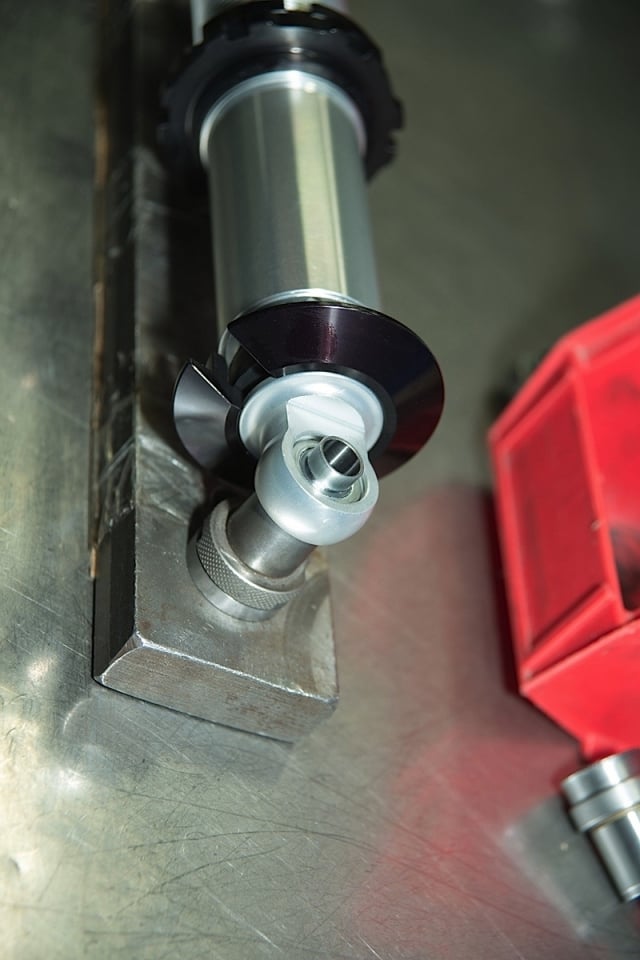 Recalling that rebound or extension is the point where chassis separation occurs and this force pushes the car ahead, the axle housing is at the same time moving in the opposite direction. In moving forward, your tires are creating traction and torque. While more rebound on a good track surface can speed up your vehicle reaction times, with too much rebound you get wheel hop. Going in the opposite direction with a stiffer setting, wheel hop can be eliminated.
Recalling that rebound or extension is the point where chassis separation occurs and this force pushes the car ahead, the axle housing is at the same time moving in the opposite direction. In moving forward, your tires are creating traction and torque. While more rebound on a good track surface can speed up your vehicle reaction times, with too much rebound you get wheel hop. Going in the opposite direction with a stiffer setting, wheel hop can be eliminated.
“On a racecar you want to control wheel motion to allow optimum tire loading and grip performance, with a proper amount of vehicle stability for good vehicle control. Finding the desired balance between grip and stability can vary with track temperature, weather, and surface aggregate (and also texture).
Too much shock adjustment does not let the tire follow the road surface and creates traction loss; too little shock adjustment and the vehicle will be unresponsive to steering inputs over bumps, dips and turns. Maximum acceleration traction is achieved when the body motions have minimal influence on the driving tire’s loading and unloading, while still allowing the tires to follow the road surface while being influenced by the torque and twists on the axles from the acceleration force,” Stange said.
All shock absorbers are manufactured at their facility and assembled by hand.
When setting up front single adjustable shocks, Jeff recommends that you start by turning the knob counterclockwise all the way, resulting in the softest setting or position number 1. At the baseline soft position or full counterclockwise setting, Strange shocks react in a way that’s roughly similar to the tried and tested 90/10 drag shock. Turning the knob clockwise, each click increases the resistance force. Since Strange’s single adjustable shocks can be adjusted or tuned on the vehicle and they are available with different valve settings based on the specific application, this gives you a range of tuning options. With single adjustable models, six clicks clockwise and the resistance force will stiffen turning them all the way to the right for full force resistance, although too much chassis separation will slow down your ETs.
Turning single adjustable Strange shocks to position number two or three will allow front end travel or weight transfer. At the rear, Strange recommends starting with the adjuster set to the farthest clockwise or hardest setting. This makes the shock hard to extend, the ride firm, and the body will not separate easily, thus solidly planting the tires. While this all sounds harsh, according to Strange it is a good point to begin your chassis tuning. If you find wheel hop is becoming a problem, dial it back until it stops. For the street, Strange recommends turning the shocks to either position number four or five to maintain ride quality and vehicle control.
With the single adjustable shock used for drag racing, start with the front adjustment at full soft and add clicks to allow the front to rise up easily and still come back down to their pre-launch ride height position. Easier said than done, several attempts might be needed and video playback is a great help. Make sure the front end does not bottom or top out abruptly as this will cause an instant loss of traction. In the rear, you want to minimize body and wheel separation with a stiffer adjustment, without causing wheel hop from too stiff an adjustment.
What about double adjustable shocks? A double adjustable shock for drag racing allows the independent adjustment of the bump and extension forces. A double adjustable shock allows adjustment of both compression and rebound. Recalling that bump or compression is the shock’s resistance to the chassis moving down or the axle moving up or into the chassis, bump adjustment will determine how long your tires are held down after chassis separation. With a Strange double adjustable shock, you can adjust compression by turning the knob anywhere from full counterclockwise to full clockwise, or one to twelve respectively.
Our recommendation for ladder bar cars is to run extension at softer settings and compression firmer. For four-link equipped vehicles, the recommendations are reversed — stiffer extension, softer compression. -Dmitry Zhukovsky
If you’re using a soft rebound setting, you may want to match it with a slightly stiffer compression setting. Each car requires a different setting when it comes to double adjustable shocks. A good starting point for rear shock adjustment is to set the rebound tight and the bump adjuster loose. What’s best for your car is usually found through trial and error, but keep in mind this may change along with or as a result of track conditions. Zhukovsky said, “The biggest difference in shock tuning is associated with different rear suspensions. Usually cars with short instant center (ladder bar suspended cars) have a harder time getting traction than cars with 4-link rear suspensions, that can extend their instant center forward.”
“Our recommendation for ladder bar cars is to run extension at softer settings and compression firmer. For four-link equipped vehicles, the recommendations are reversed — stiffer extension, softer compression. More powerful cars such as those in Pro Stock, Pro Mod and even Top Sportsman will require extension to be stiffer than our standard. Fortunately, we have special valving for them. You want to run compression to keep the rears from hopping, but not too much stiffer because otherwise it won’t go over the bumps in the racetrack”, Zhukovsky related.
Jeff advises adjusting the fronts first if the car wheel stands excessively (too soft on rebound) or bounces on gear changes (up motion is soft rebound down is soft bump). A violent reaction at launch where it lifts the front wheels off the ground indicates a shock setting that is too soft. You want the front end to move smoothly from launch through the first gear change. Bouncing or jerking won’t help with the launch or your ET. However, if it bounces on the gear change, the shocks need to be stiffened to prevent coming down on the front suspension limiters and bouncing back. After adjustment, if the front end doesn’t allow enough movement to transfer weight and it bounces the car on the tires after the launch, you may have gone too far in stiffening it up.
Zhukovsky added, “Tuning of front shocks or struts depends on traction at the rear tires as well. If a car has short instant center in order to achieve traction, you want to get the front end up so the weight will be transferred to the rear tires. Softer extension of front shocks will help with that. The down side is that with the front end off the ground, it hurts the aerodynamic properties of a car. So you want to get the front end up high enough to get traction, but not any higher, and then have it settle down gradually without upsetting chassis. That’s when front compression comes into play.”
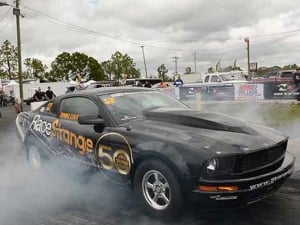 A car that rattles the rear tires, wheel hops or has too much body separation, should first have the rear shocks’ rebound adjusted. On a drag car, the rear shocks control how much force you apply to the slicks. Shocks that are too loose on the extension or rebound may allow uncontrolled rear body separation. If they are too tight, the car flattens the tires excessively or causes them to spin.
A car that rattles the rear tires, wheel hops or has too much body separation, should first have the rear shocks’ rebound adjusted. On a drag car, the rear shocks control how much force you apply to the slicks. Shocks that are too loose on the extension or rebound may allow uncontrolled rear body separation. If they are too tight, the car flattens the tires excessively or causes them to spin.
Strange recommends starting soft on the rear rebound and tightening it up progressively until the car slows down. The compression settings help control the body squatting and car rotation, and the faster you can get car up on the tires the better the ET. Strange has special valving to soften extension on Super Stock cars, especially those with automatic transmissions. Compression in the front, Dmitry stated, is usually run at a low to mid setting, unless we are dealing with a front end heavy car that requires additional compression dampening.
Coil-Over Shocks And Struts
Aluminum coil-over shocks built by Strange use technology that has been relied on by racers for years. Their lightweight aluminum design has the adjusters at the bottom of the shock body for convenient access, which makes tuning your suspension easy. Each shock can be adjusted to changing track conditions quickly and without the need for special tools. Available in single and double adjustable configurations, they can be customized to specific lengths, strokes, and valving, and all of this is done by Strange in-house.
Strange also brought Hyperco springs in as a partner for their drag racing program, one of the premier manufacturers of springs in IndyCar, Formula One and NASCAR. Springs are an intricate component of the suspension, yet one that can be easily overlooked when thought of generically, as if there is little or no difference between a well-known and respected spring maker and some company producing them for a number of companies under different brand names. Unlike the latter, Hypercoil springs are cold-wound from pre-heat treated SAE 9254 chrome silicon wire and thermally stress relieved. Hypercoil’s strict manufacturing tolerances assure racers of springs with a tolerance of +/- 2%, and these are the springs of choice for Strange.
Strange forged aluminum struts have been a drag race suspension standard since way back in the 80’s. Their aluminum struts use cartridges that can be externally adjusted on the fly and it also allows them to be re-valved as needed. Every Strange aluminum body is x-rayed to ensure quality and comes with a lightened stainless steel spindle. Each one of the company’s strut packages includes a LCA kit (Lower Control Arm), a choice of Hypercoil springs and brakes which are also included in their kits.
State of the art CNC machines turn cast aluminum into strut housings.
Strange’s GT struts have become a staple among Super Stock/GT class racers. Their struts are used by chassis builders seeking a competitive advantage for Mustang, Camaro, import and other applications. Their 6.50” of travel (standard stroke) can be modified along with valving to further optimize any application, and single or double adjustable struts are available.
For Pro and Sportsman racers, Strange Ultra strut packages were developed. More than a catchy or flashy brand name with little substance, these struts are based on an Anglia-style spindle and come standard with aluminum steering arms. The Ultra struts are available with either single or double adjustable struts, which can be reprogrammed to a different force range as needed. Included with the struts are an LCA kit, Hypercoil springs and a complete brake kit.
Finally, vehicles that have relied on rigid dragster or altered spindles now have an alternative. These Strange Ultra Struts are a compact strut specifically designed for altered or dragster applications. The Ultra Struts are ideal for assisting weight transfer and adapting to less than perfect track conditions.
Strange Engineering has evolved its race proven technology to offer a complete line of driveline parts for high performance street and drag race applications for Ford, GM and Mopar vehicles. Today’s vehicles are able to produce larger amounts of reliable horsepower and torque than ever before in race cars, as well as daily driven vehicles. As a result, a larger strain is placed on the driveline and suspension, which can result in poor performance and failure.
Strange Engineering has answered the call and developed multiple lines of axles, rear end assemblies, suspension and other components that will improve the performance, reliability and consistency of any high performance vehicle. Strange Engineering has always relied on the feedback of their customers to help improve and innovate their extensive line of driveline and suspension components. Through this feedback and the talents of their experienced engineering staff, Strange continues to change and react to the needs of today’s market. Thanks again to Jeff Stange for his time and insight into suspension technology.





